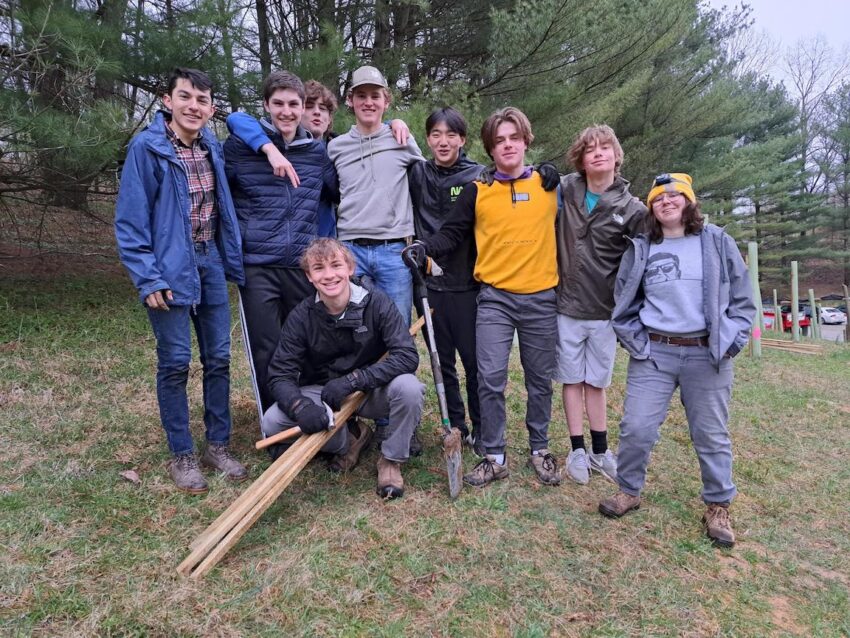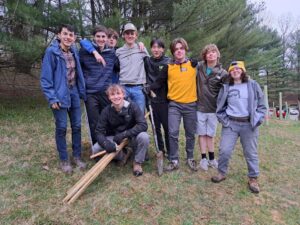 Athens Conservancy, the Ohio Department of Natural Resources (ODNR), Athens Arbor Day Committee, a couple of environmentally conscious Ohio University undergrads, and some local high school students all joined forces in late March. They got together to plant 74 American chestnut trees in the Conservancy’s newest nature preserve.
Athens Conservancy, the Ohio Department of Natural Resources (ODNR), Athens Arbor Day Committee, a couple of environmentally conscious Ohio University undergrads, and some local high school students all joined forces in late March. They got together to plant 74 American chestnut trees in the Conservancy’s newest nature preserve.
The group planted the chestnut tree seedlings at the Lindy Roosenburg Preserve near Chauncey, as part of the ODNR’s efforts to re-establish the native trees in partnership with the American Chestnut Foundation. Native American chestnut trees were nearly wiped out in the early 1900s by a deadly blight accidentally brought into the US from Asia, devastating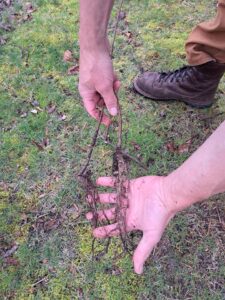 the native tree population and killing billions of them in the eastern US. Over the past five years, nearly 4,000 potentially blight-resistant American chestnut trees have been planted with help of the ODNR Division of Forestry.
the native tree population and killing billions of them in the eastern US. Over the past five years, nearly 4,000 potentially blight-resistant American chestnut trees have been planted with help of the ODNR Division of Forestry.
“The American chestnut tree was once a familiar sight in the southeastern Ohio woodland canopy, and the Athens Conservancy/ODNR partnership hopefully is a small step in reintroducing this magnificent species on our hills,” explained David Funk, Athens Conservancy board member.
Mary Reed, Conservancy advisory board member, was on hand to help guide the volunteer effort. “We got 74 bare-root trees planted and protected at Lindy’s Preserve. Chandler Castle and Jake Snyder, students from the OU Patton College of Education, led eight Athens High School students in a service-learning project to plant the trees.”
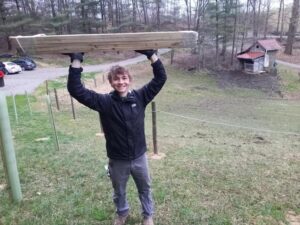 The students worked hard – and quickly – to plant the trees in about an hour at daybreak, avoiding the threat of a spring downpour. Each seedling is nestled in a protective tube to prevent damage from browsing deer. “Everyone was excited to work on such a significant environmental restoration project,” Reed added.
The students worked hard – and quickly – to plant the trees in about an hour at daybreak, avoiding the threat of a spring downpour. Each seedling is nestled in a protective tube to prevent damage from browsing deer. “Everyone was excited to work on such a significant environmental restoration project,” Reed added.
Castle and Snyder are Integrated Social Studies majors at OU, where they were participating in a community service learning day with Athens High School. “This provided us, as future educators, an opportunity to lead a group of (high school) government students in a community project, and it was a really fantastic experience,” says Snyder.
“This was a genuinely meaningful project, as the blight that wiped out our native chestnut trees impacted our environment as well as the lives of many who relied on them for food. We and the high school students were more than happy to help plant the new trees in the preserve. The high school students were really interested in this project from the get-go and were so ready to plant that they agreed to wake up very early to complete the job and avoid the rain! It 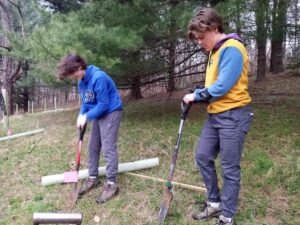 was impressive how they understood the importance of these trees and conservation in general.”
was impressive how they understood the importance of these trees and conservation in general.”
The goal of the plantings is to start reestablishing chestnut trees on the landscape and increase awareness of the reintroduction effort, according to Stephen Rist, ODNR Athens District manager. “These chestnuts may not all survive but some will get to fruit and people will be able to see 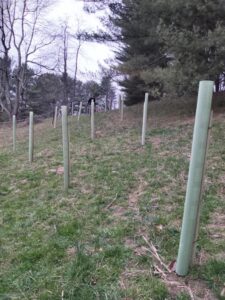 them grow,” he said. “The American Chestnut Foundation is working with public land-holding groups to plant the limited number of trees so the public can see them. The seedlings are part of the ongoing study (on) long-term survival.”
them grow,” he said. “The American Chestnut Foundation is working with public land-holding groups to plant the limited number of trees so the public can see them. The seedlings are part of the ongoing study (on) long-term survival.”
The planting site was chosen after careful consideration by Athens Conservancy experts as an area suitable for chestnut survival and growth. Rural Action’s Conservation Cohort will partner with the Conservancy to maintain the chestnuts during their critical first summer of growth by mulching and mowing around the seedlings.

